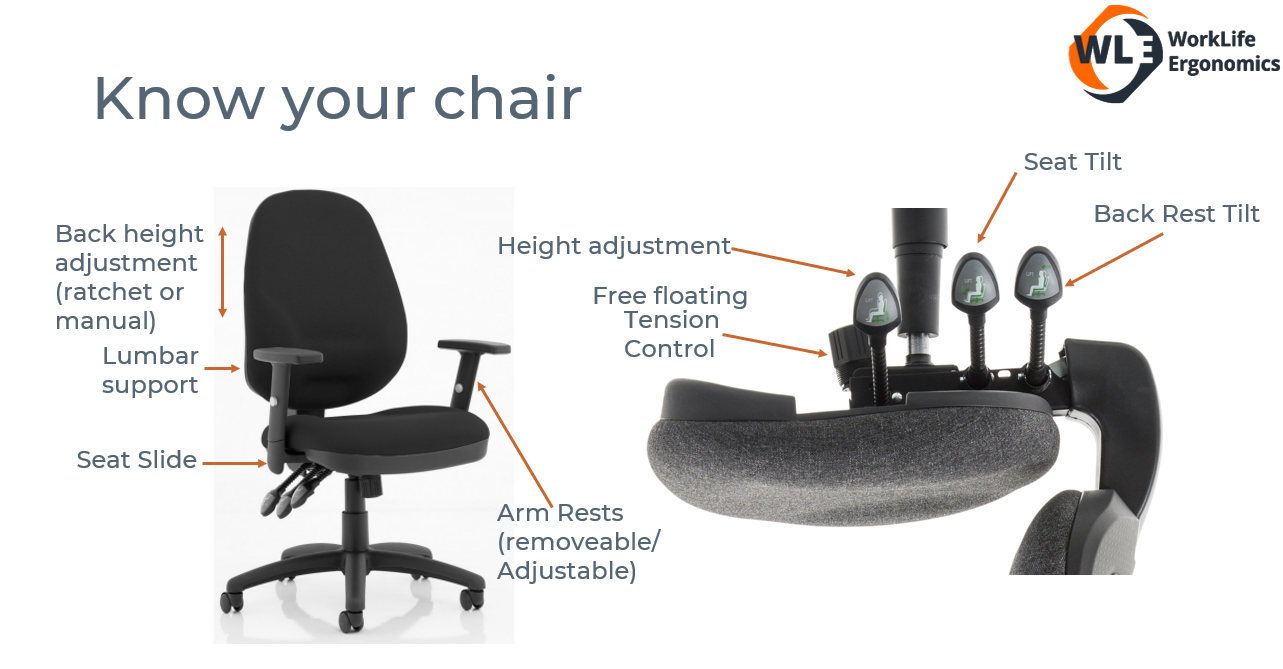what to look for when purchasing a new office chair
A frequent phrase we hear when helping people set up a comfortable workstation is “I didn’t realise I could make those alterations on my chair” and a question we are often asked is “What office chair would you recommend?”.
To answer the question, if you are looking to purchase a new office chair we would recommend the following features which will allow you to make a number of adjustments to suit your individual needs:
Height adjustable back rest on either a ratchet mechanism (it clicks up and down) or a manual mechanism (where you have to rotate a dial). You can find the position that allows the built in lumbar support to be positioned in the hollow of your lower back.
We would recommend no arm rests or arm rests that fold away, as arm rests can prevent you getting close to the desk which can lead to reaching, which can place additional demands on neck, shoulder and back muscles.
Height adjustable chair- there is often a choice of a gas lift so the chair either raises to a height of around 50cm or 60cm. Having a 60cm (600mm) gas lift is more versatile as most people will be able to get their chair to a height which is comfortable for typing. It is advisable to have your elbows 2-3 cm higher than the desk, with your elbow inline with your shoulders when typing. This allows the neck and shoulder muscles to be relaxed when typing and avoids reaching upwards to the keyboard and mouse.
A backrest tilt that is separate from the seat tilt (this is called an independent mechanism).
The backrest tilt allows you to find which angle is most comfortable for you.
The seat tilt allows you to position your hips and pelvis to a comfortable position for you.
Other features which can provide additional adjustments and a nice addition if your budget allows it, but they are by no means a requirement and will not necessarily make the chair any more comfortable.These are:
Inflatable lumbar support - often seen with a lumbar pump hanging by the side of the chair. You can inflate and deflate the lumbar support to suit your comfort.
Free floating mechanism to allow more movement in your chair. This allows you to unlock the backrest of the chair so that it is not fixed and you can alter the tension with the control; often a dial under the chair seat. This allows free movement in the chair but the tension shouldn’t be too soft so that you instantly recline and not too hard that you can’t naturally push back.
Seat slide - if you have a long thigh then this will be beneficial for you as it allows you to increase the depth of the seat. The most common seat depths are between 45 and 50cm. When sitting fully back on the chair you are aiming to get between 2 and 4 fingers between the back on your knee and the front of the seat pan, if you have more than this then a seat slide is likely to be more comfortable.

